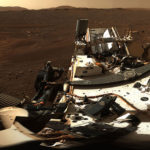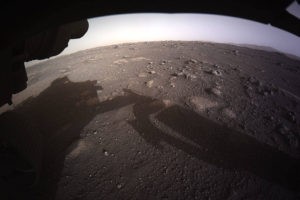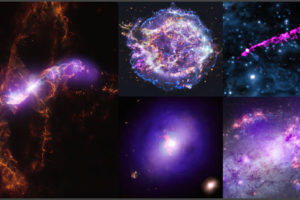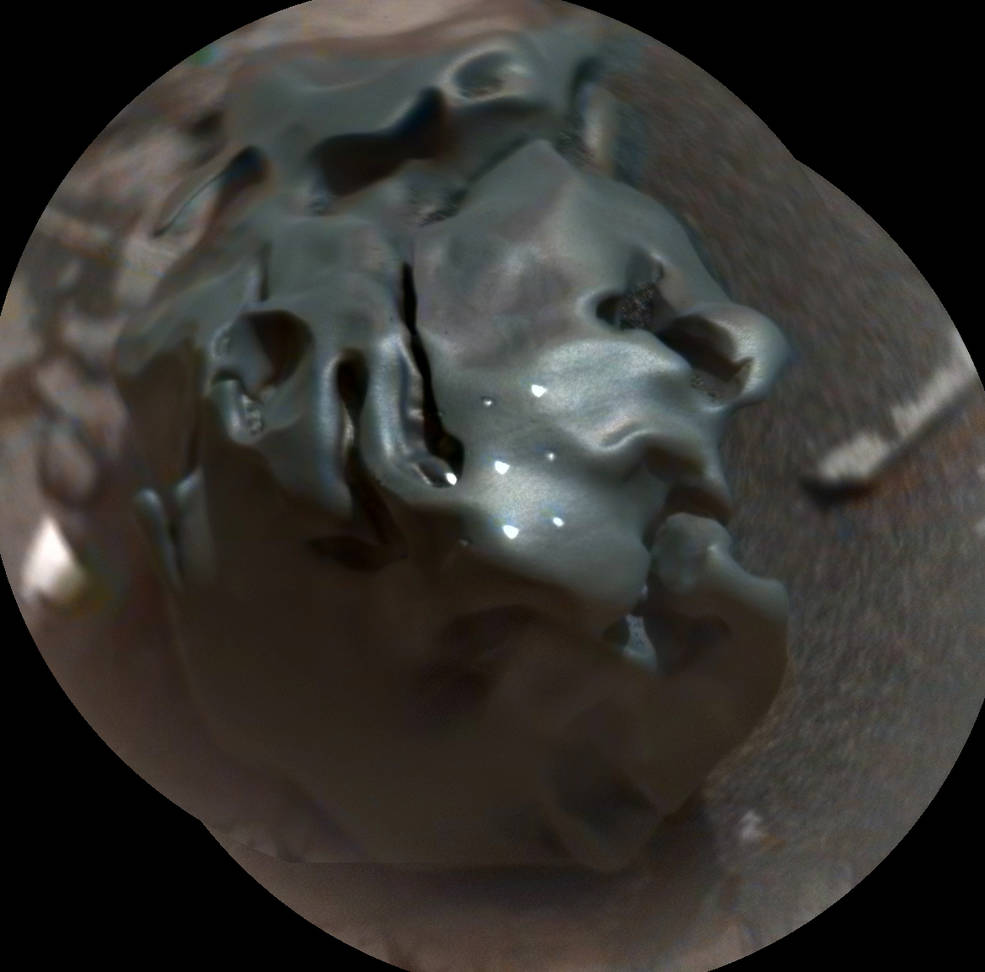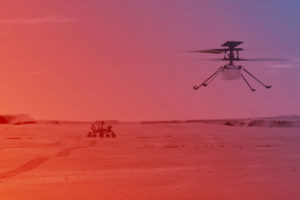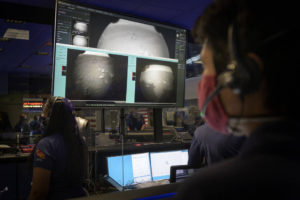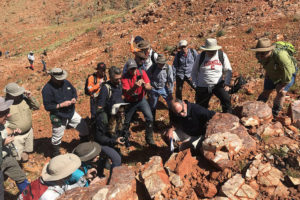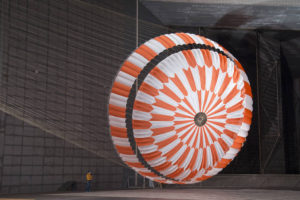先日火星に着陸したNASAの火星探査車パーサヴィアランス。
さっそく最新画像で火星のパノラマ写真を楽しみましょう。
NASAが火星の画像を公開するたびに、「変なものが写っている!」「何だこれ!」と心霊写真並みの盛り上がりがおきます。
火星人が写っているのを探したい方は、こちらのNASAの超超高解像度画像をご覧ください。
NASAの公式サイトのURLはこちら:
Mastcam-Z’s First 360-Degree Panorama | NASA
以下はオリジナル原文と和訳です。
Mastcam-Z’s First 360-Degree Panorama
This is the first 360-degree panorama taken by Mastcam-Z, a zoomable pair of cameras aboard NASA’s Perseverance Mars rover. The panorama was stitched together on Earth from 142 individual images taken on Sol 3, the third Martian day of the mission (Feb. 21, 2021).
これは、NASAの火星探査車パーサヴィアランスに搭載されたズーム可能なカメラであるMastcam-Zによって撮影された最初の360度パノラマです。このパノラマ写真はミッションの3日目(2021年2月21日)、火星の日で言えばソル3で撮影された142枚の個別の画像を地球上でパノラマに合成しました。
Annotated versions of this panorama include a scale bar and close-ups of rock features seen in the distance.
このパノラマ画像に加えた注釈付部分には、遠くに見える岩の特徴をクローズアップしたものにスケールバーを付けています。

This wind-carved rock seen in first 360-degree panorama taken by the Mastcam-Z instrument shows just how much detail is captured by the camera systems.
Credits: NASA/JPL-Caltech/MSSS/ASU
A detail shot from the top of the panorama shows the rim of Jezero Crater, Perseverance’s landing site.
パノラマ写真の上部は、パーサヴィアランスの着陸地点であるジェゼロクレーターの縁を示しています。

Credits: NASA/JPL-Caltech/MSSS/ASU
Arizona State University in Tempe leads the operations of the Mastcam-Z instrument, working in collaboration with Malin Space Science Systems in San Diego.
テンペにあるアリゾナ州立大学は、サンディエゴのマリンスペースサイエンスシステムズと協力して、Mastcam-Zの運用をしています。
A key objective for Perseverance’s mission on Mars is astrobiology, including the search for signs of ancient microbial life. The rover will characterize the planet’s geology and past climate, pave the way for human exploration of the Red Planet, and be the first mission to collect and cache Martian rock and regolith (broken rock and dust).
火星でのパーサヴィアランスのミッションの主な目的は、古代の微生物の生命の痕跡の探索を含む宇宙生物学です。探査車は、火星の地質と過去の気候から、人類による火星への探査への道を開き、火星の岩とレゴリス(壊れた岩とほこり)を採取する最初のミッションになります。
Subsequent NASA missions, in cooperation with ESA (European Space Agency), would send spacecraft to Mars to collect these sealed samples from the surface and return them to Earth for in-depth analysis.
その後のNASAのミッションとして、ESA(欧州宇宙機関)と協力して、宇宙船を火星に送り、これらの密封されたサンプルを地表から収集し、詳細な分析のために地球に持ち帰ります。
NASA’s Jet Propulsion Laboratory in Southern California built and manages operations of the Mars 2020 Perseverance rover for NASA.
For more information about the mission, go to: https://mars.nasa.gov/mars2020
Credit: NASA/JPL-Caltech/MSSS/ASU
Last Updated: Feb 25, 2021
Editor: Tony Greicius


